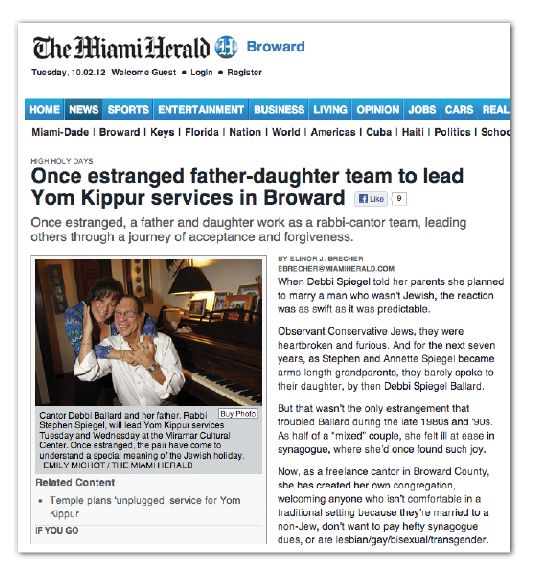
“There is nothing different here. I will probably never write a story about this because it is not unique.”
Response from Reporters
Hearing this from a journalist when you know you have a real story can be extremely frustrating. It happens to public relations professionals all the time. But what do you do when you know your story is great, and the reporter is just missing something?
Lets start with a quick lesson in public relations. There are seven things that make a story newsworthy: timeliness, significance, proximity, prominence, human interest, conflict, novelty.
In our case, we had a client with the opportunity for a great story. It had timeliness: She was holding services for the Jewish High Holy Days, and we were pitching the story a couple of weeks in advance. It had proximity: We were reaching out to all the local reporters in her geographic region. It had novelty: Her services welcomed interfaith, intercultural, and LGBT families and individuals and required no membership or dues, something that was rare in the Jewish community.
Finding the Human Interest Story
We had a great foundation for our story. But in the hectic world of the newsroom, it takes more than just a great foundation to get noticed by a reporter. Before spending precious time crafting emails and reaching out to journalists, it was time to take a step back and make sure we highlighted what really set us apart.
The answer was the human interest story. Our client had a compelling story about her father; he was a man who once nearly disowned her for marrying a non-Jewish man, and now serves beside her as part of her team. Our client had emails, texts and Facebook messages from people she had worked with, saying how enjoyable her services were (a word not commonly used when describing traditional High Holiday services.) Our client had testimonials from past congregants expressing how truly unique and uplifting her services had been. Our client had a great story because people could identify with her and the work she was doing on an emotional level.
Our pitch needed to go beyond event information, dates and times. We needed to tell the story of our client and why she was doing what she was doing. Through a simple “Q&A” section on the blog, we highlighted the story of her and her father. We gave concrete examples of what made her services different from others in the area, and what people could expect from her events, before, during and after. We created visuals so the audience could imagine experiencing the service themselves. We made the story about more than having a place to worship, but having a place to belong and be understood.
The Media Picks Up the Story
Days after posting our new content and reaching out to reporters, a writer from the Miami Herald phoned both Red Rooster Group in New York, and our client in Florida. She wanted to do a feature story about our client and her father. The next day, a reporter who once told our client he would never do a story on her, called to say he had changed his mind.
The day before her event, our client found herself on the front page of the Miami Herald. It was a feature article– a two page piece highlighting her life story, as well as testimonials, event information and pictures. The Sun-Sentinel also posted the article on their website, accompanied by a video interview several minutes long. If there was ever a great time to secure earned media, this was it. Our public relations strategy had paid off.
Lessons
The moral of this story is that you have to find your news. Journalists and reporters are overwhelmed with press releases flooding their email inbox. You have to find a way to stand out within that crowd. Before putting in all the effort it takes to reach out to reporters, think long and hard about the story you are going to put forth. Is it the most interesting news coming from your organization? Frame and reframe what you are trying to say from different angles, and see which you think is the most interesting. You don’t have to change your story, just the way its presented.
Some Tips for Getting Your Story Noticed
- Do your research beforehand. Find out what articles have been published on similar topics recently and what their headlines were.
- Don’t rush the outreach. Craft an email for each reporter you send your press release to. Write them a personalized email that specifically mentions an article they have written in the past. Don’t just send your release to a random journalist and hope they will pass along your message.
- Write different versions of your press release. Have your story framed for different news outlets when possible. For example, write a press release that would be appropriate for the business, health, and lifestyle sections of a big newspaper.
- Use the inverted pyramid style. If a reporter stops reading your press release after the headline and first paragraph, they should already have a very good idea of what is going on.
- Have an interesting headline to put in the subject line of your email. You want to give them the immediate idea that you are sending a press release and that your email should be opened.
- Provide them with more than just a press document. In our case, we provided a formatted story of our client and her father, headshots and event photos, and other biographical and background information.



